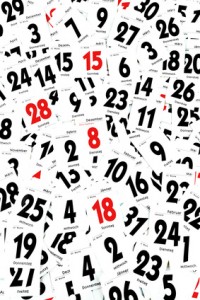 On February 6, 1952 twenty-five year old Princess Elizabeth awoke to learn that her father, King George VI, had died in the night and she was now Queen. (Succession is immediate and automatic — when the monarch dies, the successor becomes monarch without any lapse whatsoever.)
On February 6, 1952 twenty-five year old Princess Elizabeth awoke to learn that her father, King George VI, had died in the night and she was now Queen. (Succession is immediate and automatic — when the monarch dies, the successor becomes monarch without any lapse whatsoever.)
What does this have to do with the arts, Beth?
I assure you, there is a connection.
On that day in 1952, not only did Britain and the Commonwealth gain a new Queen (who would still be monarch sixty years later!) but they gained a patron of the arts. Queen Elizabeth II is patron of many societies, charities, universities, hospitals, schools, groups — and of many different arts groups.
I will not try to list them all here, but will give you a taste of the broad-rangedness of this patronage. Besides the obvious Royal Academy of Arts, Royal Academy of Dance, Royal Academy of Dramatic Art, and Royal Academy of Music, there are also lesser-known societies which can lay proud claim to having the Queen as patron.
Camerata Ireland is an orchestra that draws musicians together from both Northern Ireland and Eire. The Edinburgh International Festival celebrates classical music, opera, theatre and dance annually. The Entertainment Artistes’ Benevolent Fund ensures that members of the entertainment industry who fall on hard times have a source of assistance. This group also holds the annual Royal Variety Performance. I’m quite sure you won’t have heard of the Piobaireachd Society, which keeps alive the classical music of the bagpipe. And, close to my own heart because I used to do Scottish Country Dancing, is the Royal Scottish Country Dance Society (a form of dance that the Queen particularly enjoys). (Note that this is not the more widely-known Highland dancing, but is dance done in groups of four couples.)
You may have seen the Queen’s screen acting debut in the opening ceremonies of the London Olympics in 2012 alongside James Bond — but her experience in acting goes back much further than that. In several biographies that I have read, mention has been made of her talent for mimicking people, and when she was a teen during World War II, she acted in several royal pantomimes. Who knows what kind of career she might have had, if she’d not had another job? (Note that her son, Prince Edward the Earl of Wessex, has been closely involved in theatre and ran his own production company for a time.)
One doesn’t need to be royal to be a patron of the arts, however. Supporting local theatre, dance, music and visual arts, ensuring that children grow up appreciating these creative forms of expression, even sharing arts-related information on social media sites, helps to ensure that the arts will continue to thrive. We can all be patrons of the arts in our own way. And we can draw inspiration from others, such as Her Majesty, in the process.
For some interesting glimpses into the Queen’s 86 years, check out this BBC compilation of videos.
Wonderful that she has been so supportive of the arts in so many forms. I, too, love Scottish and Irish dancing – so amazing to watch!
Irish dancing is particularly amazing, the way their feet move, but no other part of them!
I did not know all of this about the Queen! Thanks for sharing!
You’re welcome, Rhythm!
I knew the Queen was supportive of the arts, but not to the depth that you share. There is so much talent in the UK. The entire family has always loved the arts. Thanks for this post. I’m glad that Edward was able to pursue his interests. Shows how much the monarchy has grown.
I am particularly grateful that Edward was able to pursue his dramatic interests. He is the royal patron of our local professional theatre, which is kind of cool!
Wow, I knew she was busy but that list is impressive, Beth. I’m going to have a boogy with the kids tonight to do our bit lol.
She’s amazing, isn’t she? Enjoy your boogying, Catherine!
great post, beth. i love the queen even more now knowing this about her.
Thanks, Jan — she is such an inspiration!
Did you know that Queen Elizabeth the first really liked the arts too? I read that she supported a lot of artists. 🙂
Hey Erik, maybe it’s something to do with the name Elizabeth! 😉